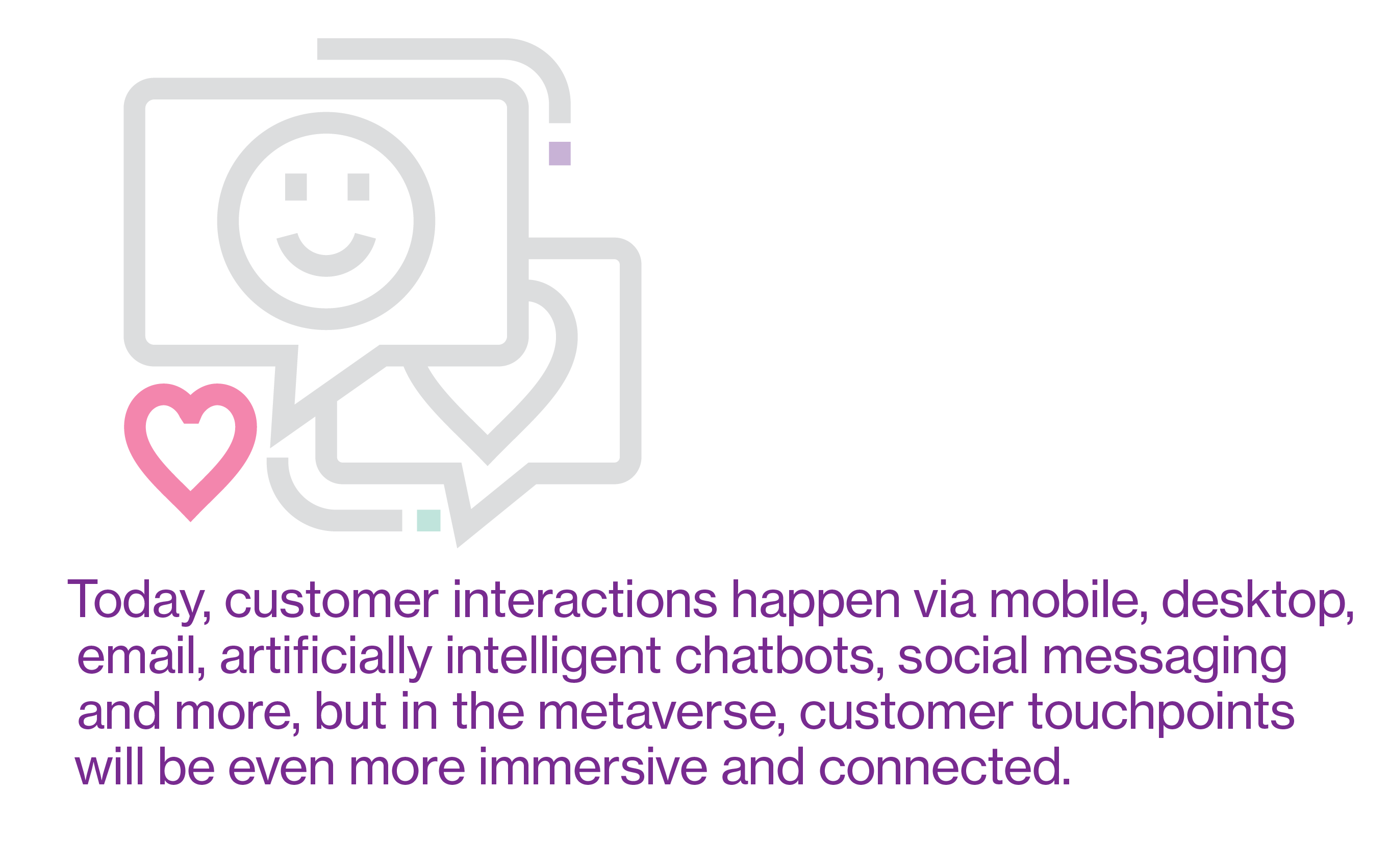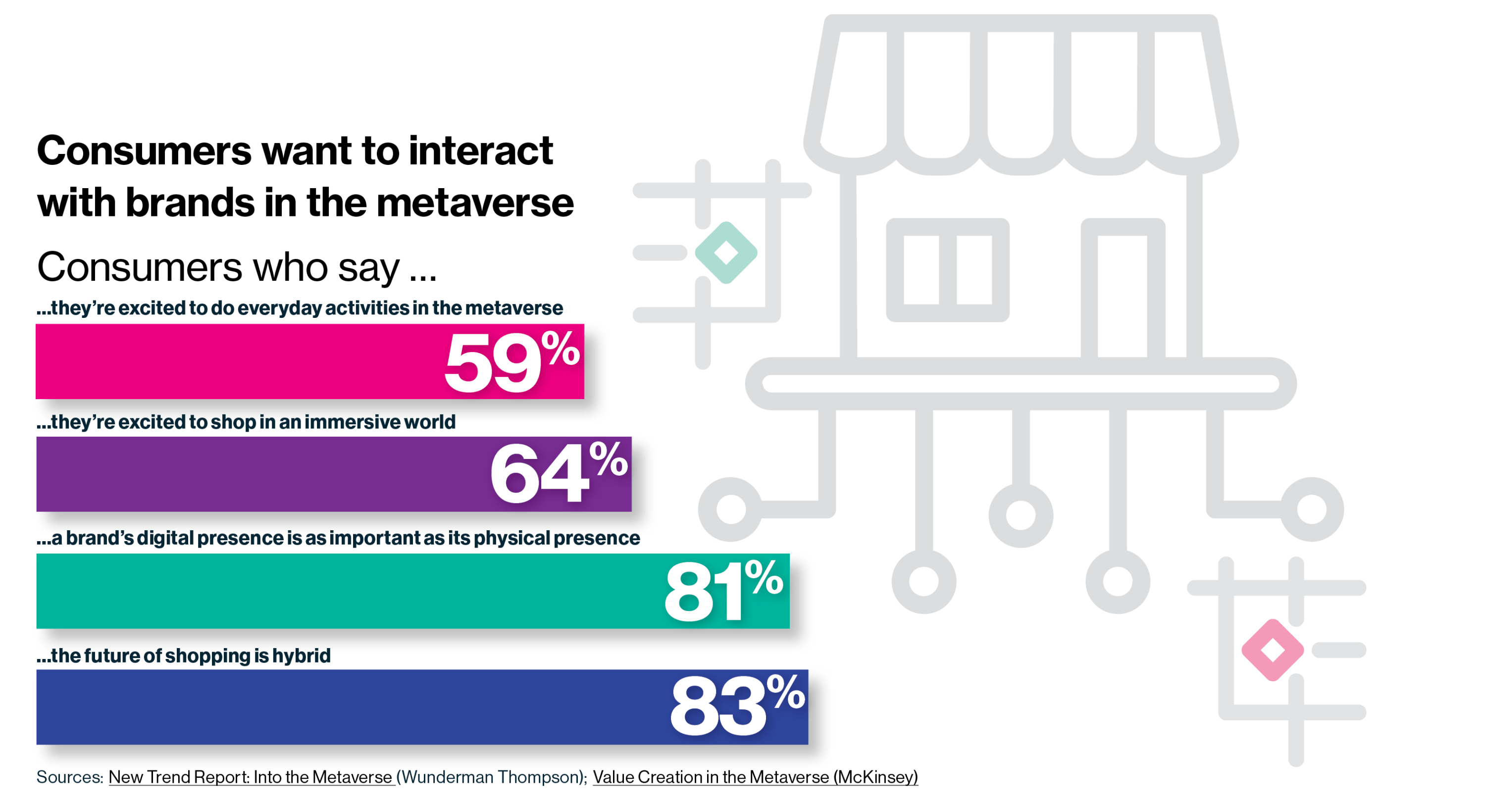Sponsored
Embracing CX in the metaverse
More than just meeting customers where they are, the metaverse offers opportunities to transform customer experience.
In association withTeleperformance
Here’s a thought experiment: It’s just a few years from now, and you’re shopping for new sneakers. You get a mobile notification from your favorite retailer—a pair you’ve been eyeing is on sale. You promptly grab your VR glasses and step into a digital representation of the store, where you design your fully personalized shoes, complete with custom colors. An AI avatar joins you for a jog around a virtual neighborhood that looks just like yours, answering questions along the way. You remove the glasses, consider the purchase, and ultimately hit “buy” several hours later while browsing on your desktop. When you pick up the order at the mall, they’re a perfect fit. Better yet—your avatar is getting the exact same pair.

Embracing CX in the metaverse
This scenario outlines a very near future omnichannel customer experience (CX), seamlessly integrating several different physical and digital retail modes. Today, customer interactions happen via mobile, desktop, email, artificially intelligent chatbots, social messaging and more, but in the metaverse, customer touchpoints will be even more immersive and connected.
“The metaverse is going to be available in a number of different ways—VR/AR glasses, smartphones, tablets and PCs, chat rooms with video, but also probably via up-and-coming things like holograms, digital signage, digital assets, and digital content,” says Ramon Llamas, research director for IDC’s augmented reality/virtual reality (AR/VR) team.
There’s been a lot of buzz lately about companies “migrating” to the metaverse, but this is a bit of a misnomer. Brands are not as much moving to the metaverse as they are expanding into it—connecting it with their traditional, two-dimensional channels. Still, the potential for the metaverse to reshape how customers and brands engage can’t be overstated. Over the next decade, the metaverse will transform CX in the same way e-commerce shook up retail in the 1990s and mobile reimagined social interactions in the early 2000s.

“The metaverse is a completely new virtual world—just like social media presented a new CX channel 15 years ago,” says Sidharth Mukherjee, chief digital officer at Teleperformance, a global company that provides digitally integrated business services. “We’re starting to see metaverse adoption across industries like retail, consumer goods, and health care, in addition to social media, gaming, and the broader tech industry.”
The evolution of customer experience
Right now, omnichannel CX is more than a “nice to have”—it adds tangible value to businesses’ bottom lines. According to the “2021 State of the Connected Consumer Report” by Salesforce, 76% of customers want to use different channels to interact with brands based on the context of their needs or queries. The International Institute for Management Development reports that retailers lose between 10% and 30% of sales if they fail to offer a sufficiently robust omnichannel shopping experience.
Omnichannel is a growing trend in marketing, too— a discipline distinct from CX but with significant overlap. In an analysis of more than 135,000 campaigns, automation software company Omnisend found that companies employing three or more channels for marketing achieved a 494% higher order rate than those relying upon just one.
In addition to offering more ways to reach customers, there’s potential for the metaverse to address real operational pain points. “The world is a 3D place—or 4D if you include time. It’s not a 2D experience, and in fact, 2D experiences feel kind of artificial,” says David Truog, vice president and principal analyst at Forrester Research. “There are many experiences that benefit from three-dimensionality, from touching and manipulation, where the metaverse will be appropriate.”

Take employee recruiting and training. Remote work, a shift accelerated by the covid-19 pandemic, seems likely to stick around for the long term—according to a Gallup survey, nine out of 10 employees want to keep working remotely in some capacity post-pandemic. As traditional definitions of “the office” continue to evolve, the metaverse could provide an ideal venue for recruiting and training geographically dispersed employees, as well as hosting team-building activities and company-wide events.
There are equally intriguing use cases for the metaverse in the context of CX. A travel agency could showcase destinations via 3D “vacation previews” that provide enticing teasers of exotic locations. Customers looking to buy a new car could “build” the vehicle of their dreams and take it for a spin on a virtual version of Route 66 or the Autobahn. Retailers could display a more extensive catalog of products than is feasible in the real world— an electronics store might be able to house 100 devices in a physical showroom, but a virtual one could contain hundreds of thousands.
There may also be opportunities to provide more effective customer support in the metaverse. “CX avatars could be on hand at the click of a ‘help’ button to find a product in a virtual mall, or to resolve questions of customers walking into a virtual bank—or a company could help a client troubleshoot issues with their dishwasher by pinpointing the problem using AR,” explains Mukherjee.
This content was produced by Insights, the custom content arm of MIT Technology Review. It was not written by MIT Technology Review’s editorial staff.
Deep Dive
Humans and technology
Building a more reliable supply chain
Rapidly advancing technologies are building the modern supply chain, making transparent, collaborative, and data-driven systems a reality.
Building a data-driven health-care ecosystem
Harnessing data to improve the equity, affordability, and quality of the health care system.
Let’s not make the same mistakes with AI that we made with social media
Social media’s unregulated evolution over the past decade holds a lot of lessons that apply directly to AI companies and technologies.
Stay connected
Get the latest updates from
MIT Technology Review
Discover special offers, top stories, upcoming events, and more.